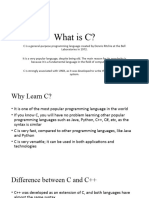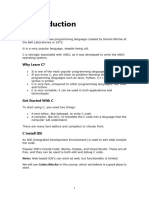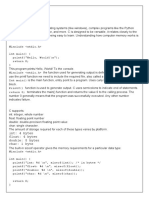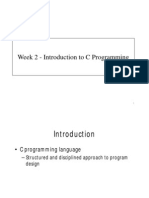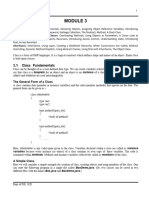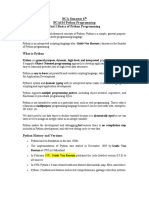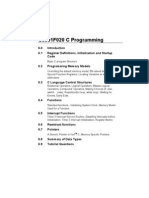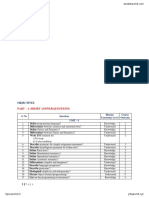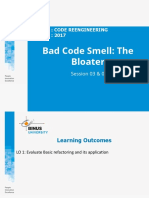0% found this document useful (0 votes)
50 views25 pagesALITS - C&DS - Online Training
The document provides an overview of the C programming language, its significance, and basic programming concepts such as variables, data types, operators, user inputs, and control structures. It includes code snippets and examples to illustrate how to print output, perform arithmetic operations, and handle user inputs, along with explanations of comments and best practices. Additionally, it discusses the importance of test cases in programming and provides examples of how to handle multiple inputs.
Uploaded by
kiranmaiiiCopyright
© © All Rights Reserved
We take content rights seriously. If you suspect this is your content, claim it here.
Available Formats
Download as DOCX, PDF, TXT or read online on Scribd
0% found this document useful (0 votes)
50 views25 pagesALITS - C&DS - Online Training
The document provides an overview of the C programming language, its significance, and basic programming concepts such as variables, data types, operators, user inputs, and control structures. It includes code snippets and examples to illustrate how to print output, perform arithmetic operations, and handle user inputs, along with explanations of comments and best practices. Additionally, it discusses the importance of test cases in programming and provides examples of how to handle multiple inputs.
Uploaded by
kiranmaiiiCopyright
© © All Rights Reserved
We take content rights seriously. If you suspect this is your content, claim it here.
Available Formats
Download as DOCX, PDF, TXT or read online on Scribd
/ 25
